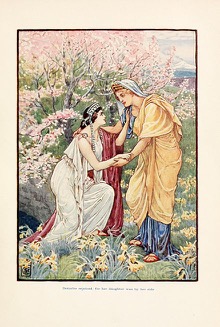如果你问福建人,什么是他们最熟悉和喜爱的花呢?
绝大多数人的答案是:水仙花啊!
福建的漳州水仙花闻名全国,还远销到海外。每年春节前,福建人都要在室内摆上一盆水仙花。养水仙花不难,一个浅口瓷碗,一点清水即可,再摆上一些从河边捡来的鹅卵石做装饰。民间高手很多,总有人热心地为你剥开水仙花的鳞茎皮,用薄而韧的刀片从外向里雕刻,将每个花苞之间的皮都去掉一些。把刻好的鳞茎浸水三天,泡掉残存的浆汁,然后再清洗干净摆在瓷碗里,不时加点清水。

 (从其他网站下载的漳州水仙花图片)
(从其他网站下载的漳州水仙花图片)
几天后,水仙的叶子长了出来,弯曲成各种造型。再后来就是花开时的心醉神迷,每支花箭上都有几朵花,花型极美,六片洁白的花瓣,鹅黄的花杯,香味不绝如缕,难怪人们称它为“金盏银台”。
如果你是懒人,干脆省了刀工,直接把鳞茎放在清水里好了。没有刻过的水仙的叶子朝上长,不开花时,外形和蒜似的,难怪有“水仙不开花-装蒜”的说法。一旦花开,洁净、淡雅、美好,自带一番飘洒俊逸的气质,又预示着吉祥如意。
我来加拿大后,发现这里的水仙是成片种在土里的,多为一茎一花,花朵比福建水仙大多了,非常奇丽,只是不香。本地人称水仙花为daffodil,而不是我在大学课本里学到的narcissus。Daffodil还是加拿大癌症协会的标志, 象征着希望。
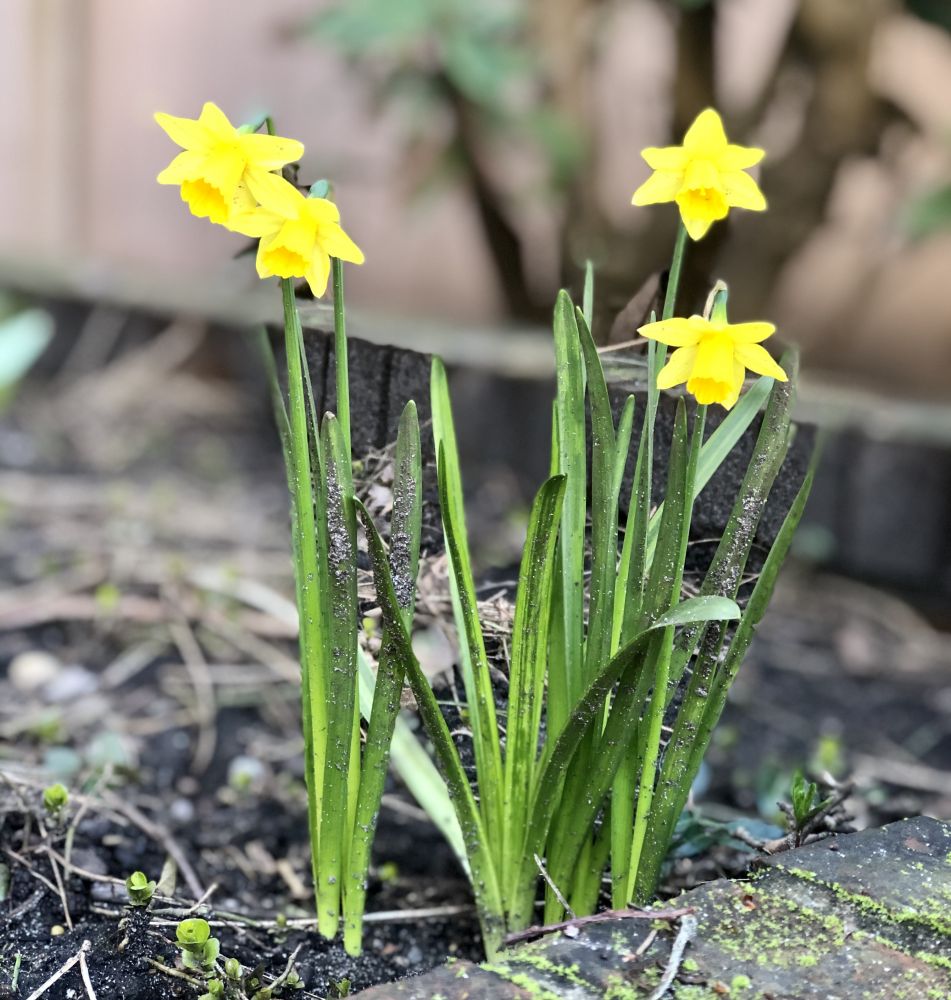
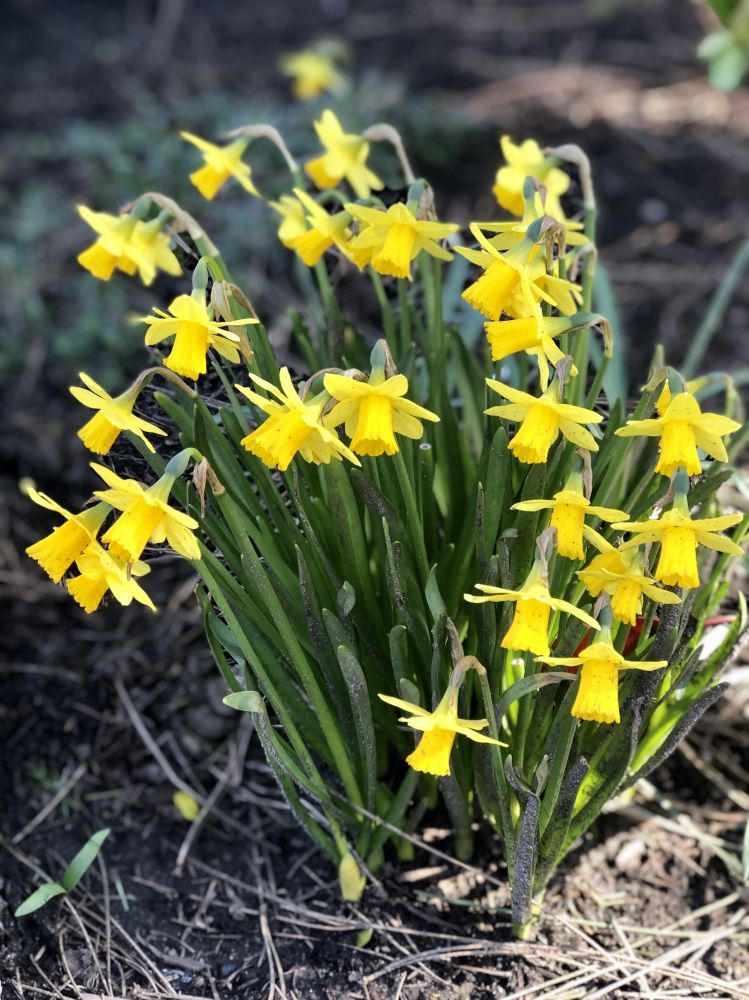 (加拿大常见的黄水仙)
(加拿大常见的黄水仙)
很显然,温哥华户外随处可见的水仙和福建水仙花并不是同一个品种。我在温哥华生活了二十多年,一直没有仔细研究过水仙。今春遭逢百年不遇的心冠病毒疫情,大多数人被迫在家上班,并且尽量减少外出。趁着难得的空闲,我重新拾起久违了的经典名著,在书香里重温水仙的芬芳。
一: 荷马诗颂里的水仙花传说
欧洲关于水仙花的名字来历的最古老的神话,并不是中国人熟知的纳西索斯(Narcissus)的故事,而是出自公元前七世纪左右的《荷马诗颂》(Homeric Hymns)。《荷马诗颂》收纳了33篇佚名作者写的古希腊颂诗,每篇颂诗都歌颂一位古希腊神灵。这些作者采取了与《伊利亚特》、《奥德赛》同样的史诗格律:抑扬六步格,并且使用了大量相同的范式和相同的方言,因此被贴上“荷马”标签。
书中的《致得墨忒耳》(To Demeter)篇,写到主神宙斯和农业之神得墨忒耳的女儿珀耳塞福涅(Persephone)被冥王帝乌斯掠走为妻的情景:
“除了金色剑和光彩水果女神得墨忒耳,她还和俄刻阿诺斯(即河神)的大胸女儿一起玩,在柔软的草地上采花,有玫瑰、番红花、美丽的紫香堇,还有鸢尾花、风信子和水仙花 – 大地按照宙斯的意愿生长着这些花,用来取悦万众之主,并作为如鲜花般盛开的妙龄姑娘的诱饵-一朵奇妙的、光彩的花朵。无论是永生的神灵还是凡人,这都是一件令人敬畏的事情:从它的根部长出一百朵花,闻起来最芬芳,使得整个天堂、整片大地和大海的盐涌都开心大笑。 这个女孩惊呆了,伸出双手去取这个可爱的玩具。但是宽阔的大地却在尼萨平原上打了一个哈欠,万众之主骑着那匹不朽的骏马奔向了她- 克罗诺斯的儿子,他有很多名字。 ”
(注:希腊人畏惧直呼冥王帝乌斯(即普鲁托)的名字,隐晦地称他为“万众之主” Host of Many)
(Apart from Demeter, lady of the golden sword and glorious fruits, she was playing with the deep-bosomed daughters of Oceanus and gathering flowers over a soft meadow, roses and crocuses and beautiful violets, irises also and hyacinths and the narcissus, which Earth made to grow at the will of Zeus and to please the Host of Many, to be a snare for the bloom-like girl — a marvellous, radiant flower. It was a thing of awe whether for deathless gods or mortal men to see: from its root grew a hundred blooms and it smelled most sweetly, so that all wide heaven above and the whole earth and the sea's salt swell laughed for joy. And the girl was amazed and reached out with both hands to take the lovely toy; but the wide-pathed earth yawned there in the plain of Nysa, and the lord, Host of Many, with his immortal horses sprang out upon her —the Son of Cronos, He who has many names. )
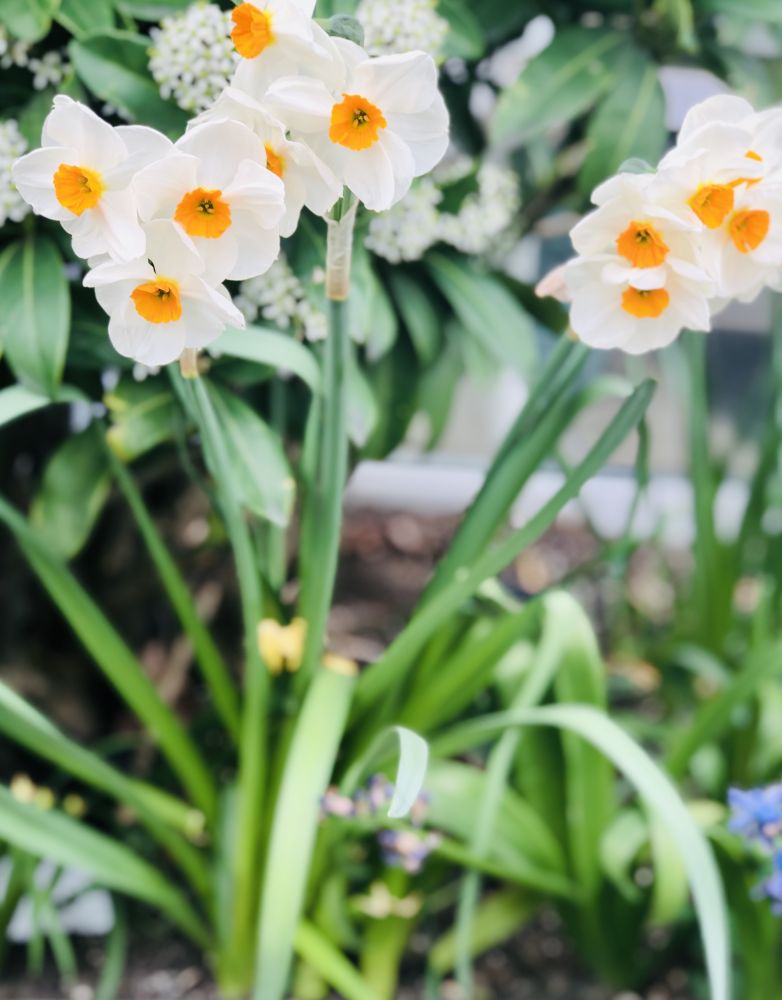

当伤心欲绝的得墨忒耳终于找到女儿时 ,女儿毫无保留地向母亲诉说了自己的悲惨遭遇:“我们正在嬉戏,采集美好的鲜花,温柔的番红花夹杂着鸢尾和风信子,还有玫瑰花和百合花,美轮美奂,还有水仙花,宽广的大地使它长成番红花那样的黄色。我兴高采烈地采着,大地突然从下面裂开,那强大的主人,万众之主一跃而出,坐在金色的战车里,把我掳到地下,尽管我极不情愿:于是我尖叫、哭泣。这一切都是事实,即使说起还使我心痛。)
(we were playing and gathering sweet flowers in our hands, soft crocuses mingled with irises and hyacinths, and rose-blooms and lilies, marvellous to see, and the narcissus which the wide earth caused to grow yellow as a crocus. That I plucked in my joy; but the earth parted beneath, and there the strong lord, the Host of Many, sprang forth and in his golden chariot he bore me away, all unwilling, beneath the earth: then I cried with a shrill cry. All this is true, sore though it grieves me to tell the tale.)
不过这则神话在西方的流传程度远不如后来的美少年纳西索斯的故事。
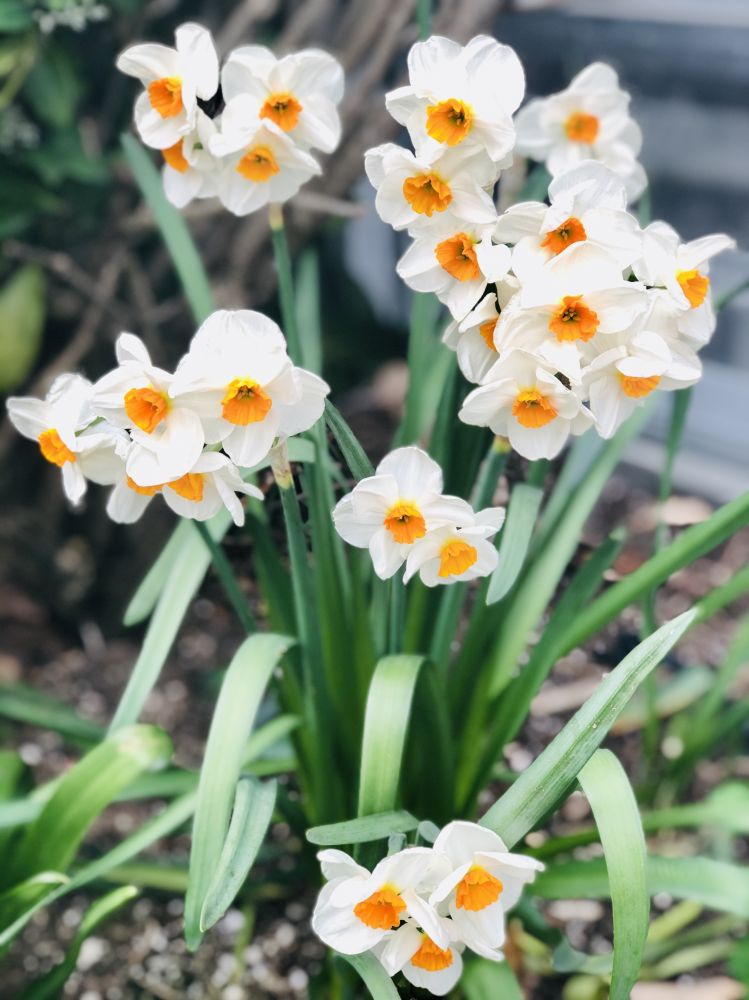
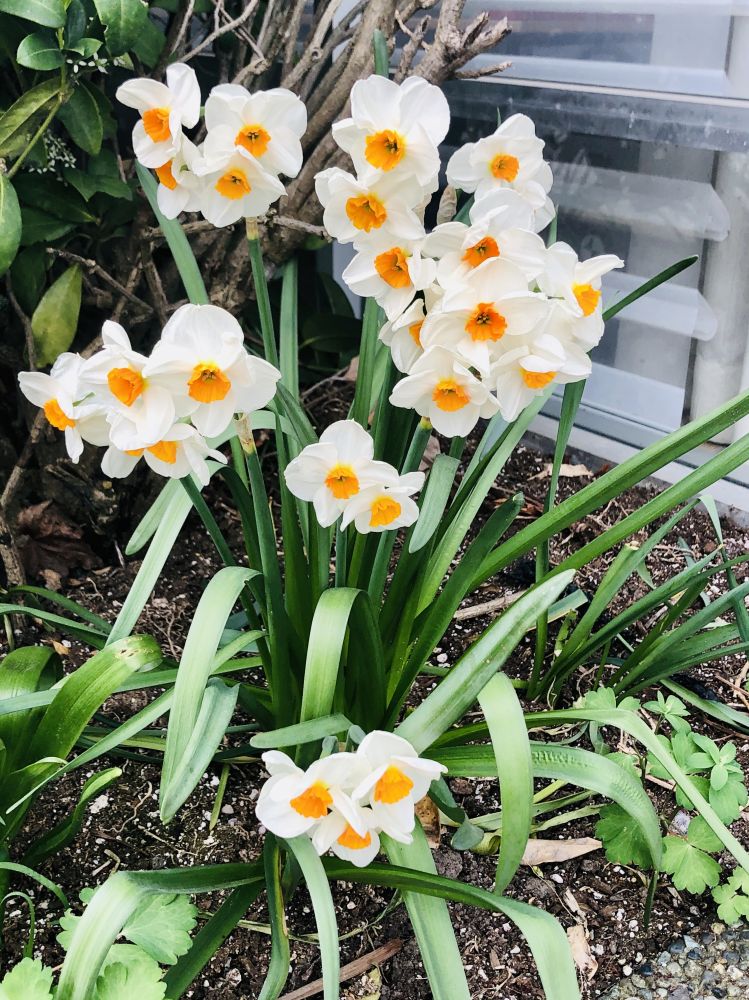
二)纳西索斯与水仙花
最著名的纳西索斯版本是古罗马诗人奥维德(Oivd, 公元前43年 - 17年)创作的。《变形记》(Metamorphoses)是他最为人知的作品,他大约于公元2年开始写这部作品,采用扬抑六步格的形式,完成于公元8年。全书有15册,每册大概700到900行,描述了罗马和希腊神话中的世界历史,其中总共包括了大约250个传说。《变形记》是最受欢迎的神话作品之一,对中世纪的文学作品以及中世纪甚至到巴洛克时期的绘画艺术有深远的影响。
《变形记》第三卷中的纳西索斯是全希腊最俊美的男子,但他对所有前来求爱的女人都无动于衷。女神厄科(Echo,“回声”的意思)对他无比着迷,他也同样加以拒绝。厄科伤心而死,只余声音回荡在山谷间。被拒绝的女子都要求复仇女神惩罚纳西索斯。一次纳西索斯在湖水中看到了自己的脸,疯狂地爱上了自己的倒影,再也无法从湖边离开。原文是这样的:
“他(纳西索斯)说着,疯狂地回到相同的倒影中,他的眼泪搅动了湖水,倒影在荡漾的水波中变得模糊不清。当他看到倒影消失时,大声喊道:‘你飞往哪里?留下来,残忍的你,不要放弃一个爱你的人!我被允许凝视我无法触摸的东西,飨宴我的悲怆热情。’他哭泣时,泪水流到了衣服上,然后用大理石般精致的手捶打着赤裸的胸膛。他的胸部因双手捶打而泛红,就像半红半白的苹果,或似不同枝条上的葡萄串,因没有成熟而沾染了一点紫色。
当他看到所有这一切都倒影在溶溶水波中时,再也忍受不了。就像黄色的蜡在微弱的火焰中熔化,像早晨的霜在阳光下消融,他也被爱削弱和融化了,被爱情的火焰一点点消磨。他不再拥有白里透红的美颜,不再拥有令人赏心悦目的生命和力量,也不再拥有厄科所钟爱的身体。厄科看到这一切,尽管还在生气和记着之前的事,但仍怜悯他。当那个男孩叹气时,她也重复‘唉’,当他的手捶打肩膀时,她也回应同样的痛苦的声音。当他望着熟悉的水池说出最后一句话:‘哎,一切都是徒劳,心爱的男孩’时,每一个字句都在原地回荡。当他说‘再见’时,厄科也说了‘再见!’
他将疲倦的头埋在绿色的草地上,死亡闭上了那双令造化惊叹的美丽的眼睛。
当他被送入地府后,仍注视着斯堤克斯河 (即环绕冥土的五条冥河之一)。他的水泉仙女姐妹们(Naiad,希腊神话中居住于溪水、泉水中并统辖这些水泽的仙女)为他悲恸,放下头发,树妖们(Dryad,希腊神话中的树妖,通常以年轻美貌女子的形象出现)也悲痛不已。厄科重复着她们的哀悼。她们准备着葬礼的柴堆、火把和棺柩,但是尸体不见了。她们发现了一朵花,白色的花瓣环绕着黄色的心。”
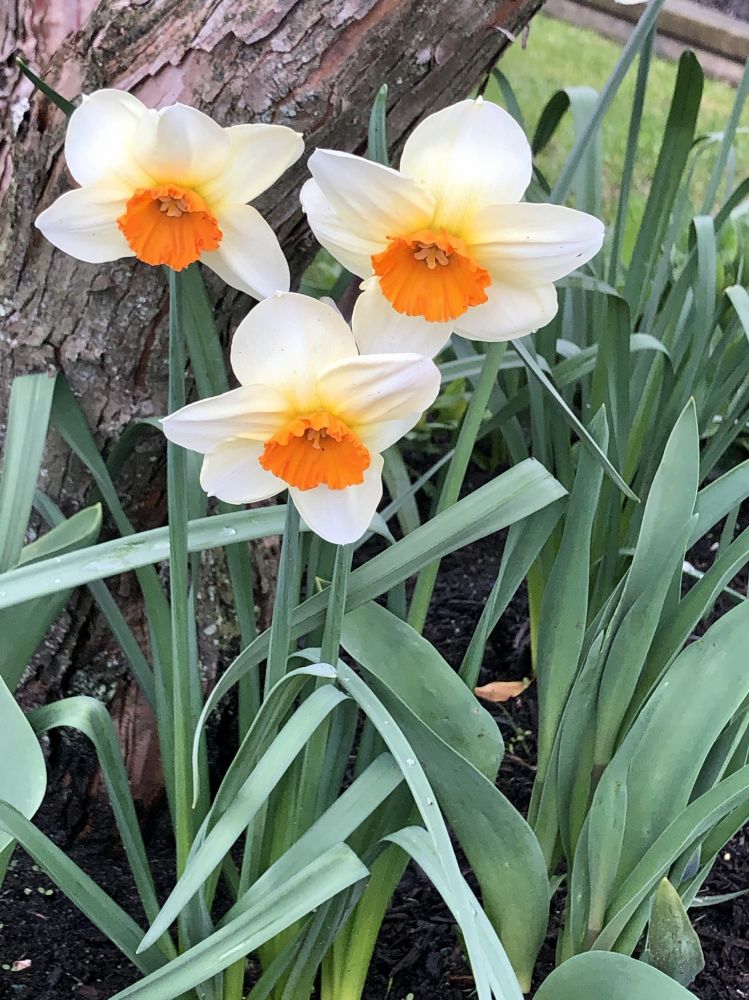
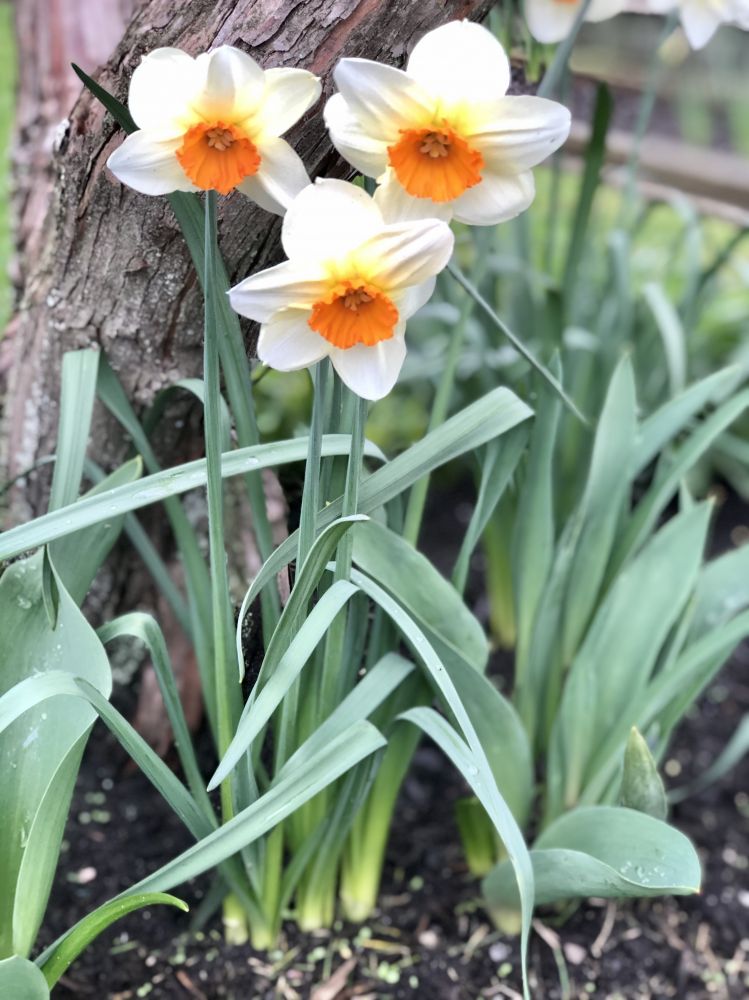
(He spoke, and returned madly to the same reflection, and his tears stirred the water, and the image became obscured in the rippling pool. As he saw it vanishing, he cried out ‘ Where do you fly to? Stay, cruel one, do not abandon one who loves you! I am allowed to gaze at what I cannot touch, and so provide food for my miserable passion!’ While he weeps, he tears at the top of his clothes: then strikes his naked chest with hands of marble. His chest flushes red when they strike it, as apples are often pale in part, part red, or as grapes in their different bunches are stained with purple when they are not yet ripe.
As he sees all this reflected in the dissolving waves, he can bear it no longer, but as yellow wax melts in a light flame, as morning frost thaws in the sun, so he is weakened and melted by love, and worn away little by little by the hidden fire. He no longer retains his colour, the white mingled with red, no longer has life and strength, and that form so pleasing to look at, nor has he that body which Echo loved. Still, when she saw this, though angered and remembering, she pitied him, and as often as the poor boy said ‘Alas!’ she repeated with her echoing voice ‘Alas!’ and when his hands strike at his shoulders, she returns the same sounds of pain. His last words as he looked into the familiar pool were ‘Alas, in vain, beloved boy!’ and the place echoed every word, and when he said ‘Goodbye!’ Echo also said ‘Goodbye!’
He laid down his weary head in the green grass, death closing those eyes that had marvelled at their lord’s beauty.
And even when he had been received into the house of shadows, he gazed into the Stygian waters. His sisters the Naiads lamented, and let down their hair for their brother, and the Dryads lamented. Echo returned their laments. And now they were preparing the funeral pyre, the quivering torches and the bier, but there was no body. They came upon a flower, instead of his body, with white petals surrounding a yellow heart. )
与奥维德同一时期的神话学家科农(Conon,公元前63年 - 公元14年)也写过一个关于纳西索斯的故事:一个名叫阿美尼亚斯(Ameinias)的年轻人爱上了纳西索斯,纳西索斯拒绝了他,给了他一把剑。 阿美尼亚斯在纳西索斯的家门口自杀了。自杀前,他向诸神祈祷,要把纳西索斯给他的痛苦加倍奉还。某天纳西索斯走到一潭清泉边,准备喝点水。他看到了自己的倒影,深深地爱上了它,并为此感到绝望,相信自己因残酷对待阿美尼亚斯而遭到天谴。他痛苦地自杀了,鲜血流到地上,化成了水仙花。
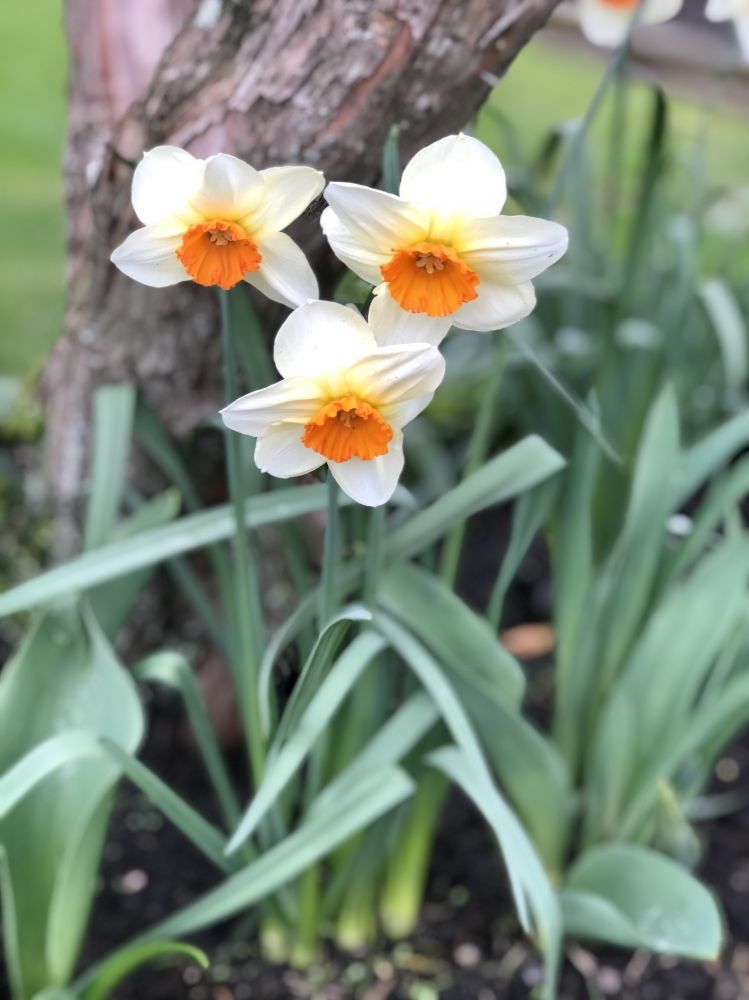

十九世纪末,埃及首都开罗附近的俄克喜林库斯(Oxyrhynchus)地区发现了大量的纸莎草纸古文书,专家们一致致力于文物的翻译和整理,并于2005年出版了相关书籍。其中的一张纸莎草纸上留有一首以诗歌的形式写下的纳西索斯神话,专家们认为这是希腊语文法家及诗人帕台尼乌斯(公元前72年 – 公元14年) 于公元前50年创作的。帕台尼乌斯又被后世学者称为尼西亚的帕台尼乌斯(Parthenius of nicaea),曾经是古罗马最著名的诗人维吉尔的希腊文老师。
如果推断属实,那么帕台尼乌斯诗歌就是历史上最早的纳西索斯版本。 研究人员从莎草纸碎片上拼凑而成的诗歌译文如下:
“… 神一样的 …
他有一颗残忍的心,讨厌所有人,
直到他爱上了自己的模样:
他哭了起来,看到自己的脸,如梦似幻,
在泉水潭里,他为自己的美丽而哭泣。
然后少年身子里的血流了出来,献给大地
… 去承受”
(… god-like …
… …
He had a cruel heart, and hated all of them,
Till he conceived a love for his own form:
He wailed, seeing his face, delightful as a dream,
Within a spring; he wept for his beauty.
Then the boy shed his blood and give it to the earth
… to bear)
与科农的散文版本一样,这首诗里的纳西索斯最终自杀,鲜血洒在了大地上。
生活在公元二世纪的罗马时代的希腊地理学家和旅行家保萨尼亚斯(Pausanias,公元110年-180年)在著作《希腊志》(Description of Greece)的第九章记述了纳西索斯故事:
“在特斯皮埃地区有一个叫做多拿肯(Donacon,意为‘芦苇床’)的地方。这里有水仙泉。他们说纳西索斯盯着水面,却不知道他看到的是自己的倒影,不知不觉地爱上了自己,并在那年的春天因爱憔悴而死。但这个说法太愚蠢了,一个成熟的能够坠入爱河的男人竟然无法分辨真人和倒影。
还有一个关于水仙的故事,不如另一个故事流行,但比较靠谱。传说纳西索斯有一个双胞胎妹妹,他俩的外表完全相同,一样的头发,穿着相似的衣服,一起狩猎。纳西索斯爱上了妹妹,当女孩去世时,他来到了泉边,清楚地知道他看到的是自己的倒影。尽管如此,他还是略感安慰,想象着看到的不是自己的倒影,而是妹妹的影子。

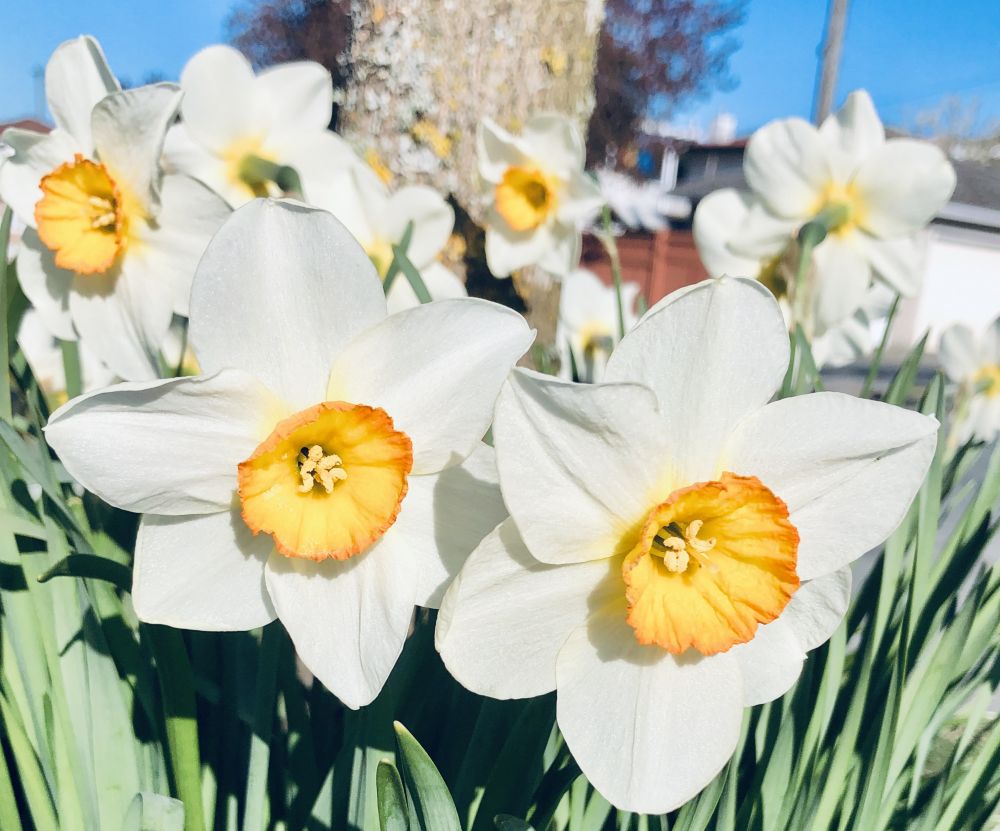
我认为,根据潘波(注:Pamphos,古希腊诗人,出生于荷马之前)的诗来判断,好多年前就有水仙花了。潘波比多拿肯的纳西索斯早出生许多年,他说得墨忒耳的女儿在玩耍时被掳走了,用来做诱饵的花朵不是紫香堇,而是水仙花。”
(In the territory of the Thespians is a place called Donacon (Reed-bed). Here is the spring of Narcissus. They say that Narcissus looked into this water, and not understanding that he saw his own reflection, unconsciously fell in love with himself, and died of love at the spring. But it is utter stupidity to imagine that a man old enough to fall in love was incapable of distinguishing a man from a man's reflection.
There is another story about Narcissus, less popular indeed than the other, but not without some support. It is said that Narcissus had a twin sister; they were exactly alike in appearance, their hair was the same, they wore similar clothes, and went hunting together. The story goes on that Narcissus fell in love with his sister, and when the girl died, would go to the spring, knowing that it was his reflection that he saw, but in spite of this knowledge finding some relief for his love in imagining that he saw, not his own reflection, but the likeness of his sister.
The flower narcissus grew, in my opinion, before this, if we are to judge by the verses of Pamphos. This poet was born many years before Narcissus the Thespian, and he says that the Maid, the daughter of Demeter, was carried off when she was playing and gathering flowers, and that the flowers by which she was deceived into being carried off were not violets, but the narcissus.)
显然,水仙花是美少年纳西索斯死后变化而成的故事在古希腊后期就广泛流传了。奥维德版本是唯一将仙女厄科与纳西索斯关联在一起的。几种版本里的纳西索斯的死法不同,但有一点是相同的:纳西索斯死后,尸体不见了,化身为美丽的水仙花。但保萨尼亚斯似乎更偏向荷马诗颂的说法,认为水仙花早在几百年前就被称作“narcissus”了,那时多拿肯的美少年纳西索斯还没有出生呢!
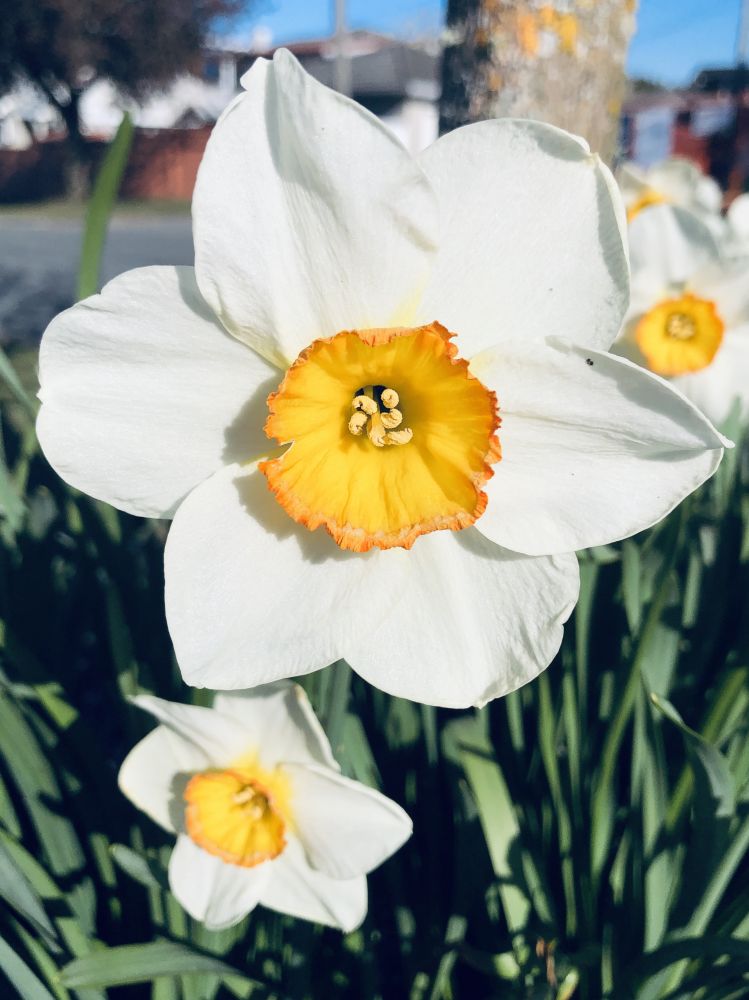

关于水仙花(Narcissus)名字的由来,还有一个更为世俗的解释。古罗马博物学家和作家老普林尼(Pliny, the elder,公元23年-79年)在著作《自然史》(Natural History)第21卷第75章提到:“有两种水仙在医学中使用,一种带有紫色的花,另一种是草本水仙(注:被后世的瑞典植物学家林奈取名为Narcissus pseudonarcissus,即黄水仙)。最后,这对胃是有害的,它既起到催吐作用,又是泻药。它对肌腱也有害,并产生头部麻痛:因此,它的名字源于“ narce”,而不是寓言故事里的纳西索斯。”
(Two varieties of the narcissus are employed in medicine, the one with a purple flower, and the herbaceous narcissus. This last is injurious to the stomach, and hence it is that it acts both as an emetic and as a purgative: it is prejudicial, also, to the sinews, and produces dull, heavy pains in the head: hence it is that it has received its name, from "narce," and not from the youth Narcissus, mentioned in fable.)
希腊语中的“ Narce”或“ narke”是“麻醉品”(narcotic)一词的根源,意为“麻木、嗜睡”。古希腊人早就知道水仙花的鳞茎有毒,误食后会出现恶心、呕吐、腹痛、腹泻等症状。对于园丁来说,这是一个优点,水仙鳞茎不太可能遭到小动物的啃噬,容易种植。
附:
英格兰最成功的拉斐尔前派画家之一约翰·威廉姆·沃特豪斯(John William Waterhouse)于1903年创作的《厄科与纳西索斯》(Echo and Narcissus)。除了水仙,画面上还有黄鸢尾花。

得墨忒耳与女儿珀耳塞福涅在开满水仙花的原野上
